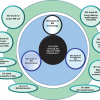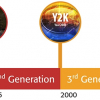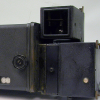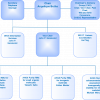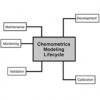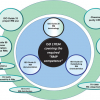Peter J. Jenks
the Jenks Partnership, Newhaven House, Junction Road, Alderbury, Salisbury, Wiltshire SP5 3AZ, UK
In the final RM Column, I concluded with the words “To cover this enhanced scope the editorial team will expand: there will be a couple of new names joining me in the preparation of the new column”. In this, the very first Spectroscopy Europe Quality Matters Column, I’m delighted to be able to announce our new columnists as Christopher Burgess and John Hammond.
Chris Burgess brings to the column a wealth experience gained over more than 30 years working in the pharmaceutical industry. Now an independent consultant he spent much of his working life within the Analytical Division of Glaxo Operations at Barnard Castle responsible for pharmaceutical Quality Assurance and Analytical R&D. In parallel he has been much involved with the Royal Society of Chemistry, indeed he is a Fellow of the Royal Society of Chemistry (RSC), a Qualified Person on the Indicative Register of Analytical Chemists of the RSC, a Chartered European Chemist and a qualified ISO 17025 assessor.
Chris started out as a research chemist, following his PhD at Loughborough with a post doctorial research posts at both the University of Hong Kong and at the University of Southampton. He has published more than 60 papers and books, including Standards in Absorption Spectrometry on behalf of the Ultraviolet Spectrometry Group. His interests include the automation and software control of analytical operations, the application of mathematics to analytical chemistry, and diode array spectrometry in analytical chemistry.
Chris brings a unique combination of skills and experiences to the column: his first contributions will focus on Quality Matters in the pharmaceutical industry and in particular the consequences of the growth of ISO 17025 within the analytical side of the pharmaceutical industry.
John Hammond is Technical Manager for Analytical Products at Starna Group, including Optiglass spectrophotometer cells. In the 1950s Optiglass developed a technique for fusing the parts of a spectrophotometer cell only by heat without distorting the optical surfaces. This led to the production of filled, sealed cells for use as optical property CRMs. The growing requirement for laboratory accreditation by a recognised quality standard such as GLP, ISO 17025 or ISO 9000 with “evidence of control” increased demand for all types of CRMs with a traceable path to internationally recognised primary materials or procedures. Starna was one of the very first CRM producers to achieve accreditation to ISO 17025 plus ISO Guide 34 as a RM producer.
John has been closely associated with the changes caused by ISO 17025: he recently was appointed the UK Industrial Representative on the ISO REMCO Committee, succeeding the late Peter Ridsdale. Like Chris he has been much involved with the Royal Society of Chemistry (RSC) and is a Fellow of the Royal Society of Chemistry, a Chartered Chemist and a Chartered Scientist. John also serves as chairman of ASTM Sub-committee E13.01 on UV-Visible Spectrophotometry, and is a member of the UK Reference Materials Working Group.
John’s first article will be “What’s ISO-REMCO all about”—a review of the 30th anniversary meeting in Tsukuba, Japan, in June 2007, will explain more about the aims and objectives of ISO REMCO. He will follow this with a report of the 31st REMCO meeting, which will take place in Rio, Brazil, during June 2008.
In addition to the two new contributors I will continue to write on the use and application of reference materials in analytical chemistry and how their role underpins the practical application of ISO 17025. Although it seems as though ISO 17025 has been around for many years, 17025 accreditation is very new and there are still many laboratories for whom ISO 17025 is a novel experience and the journey to accredited status filled with pitfalls. Many of the new wave of ISO 17025 accredited labs are to be found in academia: a very readable overview from one such laboratory was published last year in the journal Accreditation and Quality Assurance1 (better known as AQAL). The authors, D. Zapata-García, M. Llauradó and G. Rauret from the Analytical Chemistry Department, Faculty of Chemistry, University of Barcelona describe the experience of implementing a quality system on ISO 17025, and the accreditation of some tests for a university laboratory, in this case the Environmental Radiology Laboratory.
It was obvious that implementation in a university institution was a difficult task, since the setting and environment are both unfavourable when compared with industry. In particular the collaboration of many independent units of a university and the involvement of academics and researchers who have to coordinate all the different requirements of ISO 17025 especially as the number of people working is variable is a challenge. Some specific aspects of the system are discussed by the authors who conclude that implementation of an ISO 17025 quality system is completely achievable and desirable as the discipline, as they put it, “puts university members in touch with the real world and broadens their minds”—undoubtedly this can only have a positive impact on research studies and academic content.
Reference
- D. Zapata-García, M. Llauradó and G. Rauret, Accred. Qual. Assur. 6, 317–322 (2007).


